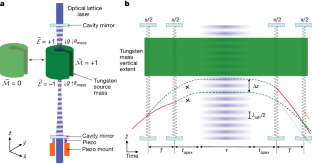2024-06-26 パデュー大学
<関連情報>
- https://www.purdue.edu/newsroom/releases/2024/Q2/new-twists-on-tornadoes-earth-scientist-studies-why-u.s-has-so-many-tornadoes.html
- https://www.pnas.org/doi/abs/10.1073/pnas.2315425121
上流の地表の粗さと地形が、北米と南米における竜巻の可能性のコントラストを強く引き起こしている Upstream surface roughness and terrain are strong drivers of contrast in tornado potential between North and South America
Funing Li , Daniel R. Chavas, Brian Medeiros, +1, and Kristen L. Rasmussen
Proceedings of the National Academy of Sciences Published:June 18, 2024
DOI:https://doi.org/10.1073/pnas.2315425121
Significance
Why does the United States have the most tornadoes in the world? This work examines how a smooth, flat ocean-like upstream surface may substantially increase the potential for tornadoes downstream. This explains why North and South America both possess severe thunderstorm hotspots due to their similar geographic setup—a mountain range to the west and an equatorward source of warm, moist air—yet only North America is a hotspot for tornadoes because the equatorward ocean surface is smooth and flat. Understanding why tornado hotspots form is a foundation for understanding how they may change in a warming climate.
Abstract
Central North America is the global hotspot for tornadoes, fueled by elevated terrain of the Rockies to the west and a source of warm, moist air from equatorward oceans. This conventional wisdom argues that central South America, with the Andes to the west and Amazon basin to the north, should have a “tornado alley” at least as active as central North America. Central South America has frequent severe thunderstorms yet relatively few tornadoes. Here, we show that conventional wisdom is missing an important ingredient specific to tornadoes: a smooth, flat ocean-like upstream surface. Using global climate model experiments, we show that central South American tornado potential substantially increases if its equatorward land surface is smoothed and flattened to be ocean-like. Similarly, we show that central North American tornado potential substantially decreases if its equatorward ocean surface is roughened to values comparable to forested land. A rough upstream surface suppresses the formation of tornadic environments principally by weakening the poleward low-level winds, characterized by a weakened low-level jet east of the mountain range. Results are shown to be robust for any midlatitude landmass using idealized experiments with a simplified continent and mountain range. Our findings indicate that large-scale upstream surface roughness is likely a first-order driver of the strong contrast in tornado potential between North and South America.




